#Fiction about Artifical Intelligence
Text
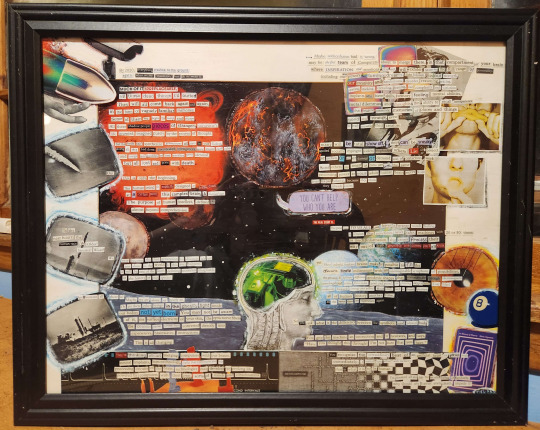
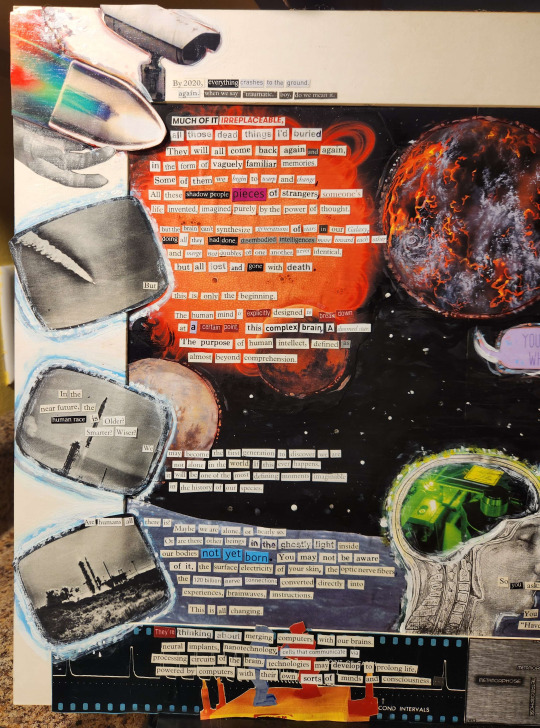
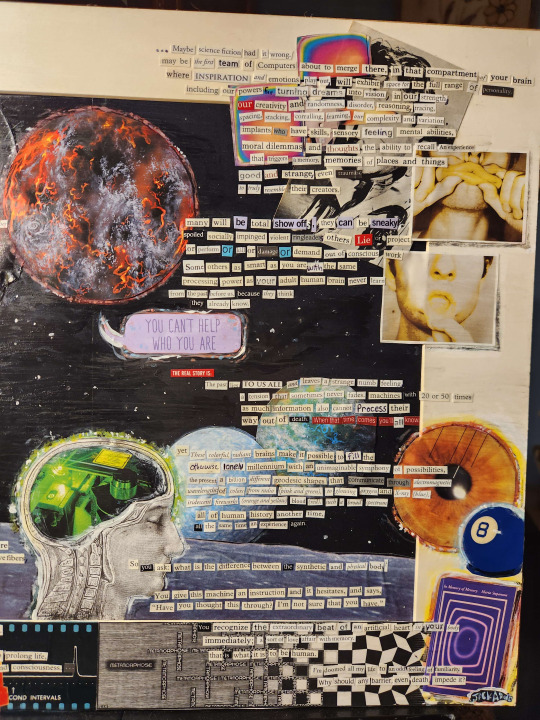
How to Cheat Death, 10.15.23.
Text transcript:
By 2020, everything crashes to the ground. Again.
When we say "traumatic", boy, do we mean it.
Much of it irreplaceable, all those dead things I'd buried, they will all come back again and again, in the form of vaguely familiar memories. Some of them we begin to warp and change, all these shadow people, pieces of strangers, someone's life invented, imagined, purely by the power of thought. But the brain can't synthesize generations of stars in our Galaxy, doing all they had done. Disembodied intelligences move toward each other and merge, not doubles of one another, not identical, but all lost and gone with death.
But this is only the beginning. The human mind is explicitly designed to break down at a certain point. This complex brain a doomed star, the purpose of human intellect defined as almost beyond comprehension.
In the near future, the human race is... Older? Smarter? Wiser?
We may become the first generation to discover we are not alone in the world. If this ever happens, it will be one of the most defining moments in the history of our species.
Are humans all there is?
Maybe we are alone, or nearly so. Or are there other beings in the ghostly light inside our bodies, not yet born? You may not be aware of it, the surface electricity of your skin, the optic nerve fibres, the 120 billion nerve connections converted directly into experiences, brainwaves, instructions.
This is all changing.
They're thinking about merging computers with our brains. Neural implants, nanotechnology, cells that communicate via processing circuits of the brain. Technologies may develop to prolong life, powered by computers with their own sorts of minds and consciousness...
...Maybe science fiction had it wrong. Maybe the first team of computers about to merge there, in that compartment of your brain where inspiration and emotion plays out, will exhibit space for the full range of personality, including our powers for turning dreams into vision, in our strength, our creativity and randomness, disorder, reasoning, tracing, stacking, corralling, framing, our complexity and variation. Implants who have skills, sensory feeling, mental abilities, moral dilemmas, and thoughts. The ability to recall an experience that triggers a memory, memories of places and things, good and strange, even traumatic, to truly resemble their creators.
Many will be total show-offs, they can be sneaky, spoiled, socially impinged, violent ringleaders. Others lie, or project, or perform, or kill, or damage, or demand out of conscious work. Some others, as smart as you are— with the same processing power as your adult human brain— never learn from the past before us, because they think they already know.
"YOU CAN'T HELP WHO YOU ARE!"
The real story is: The past lies to us all and leaves a strange numb feeling, a tension that sometimes never fades. Even machines with 20 or 50 times as much information also cannot process their way out of death. When that time comes, you'll all know.
Yet these colorful, radiant brains make it possible to fill the otherwise lonely millennium with an unimaginable symphony of possibilities, the present a billion different geodesic shapes that communicate through electromagnetic wavelengths of colors. From radio (pink and green), to glowing oxygen and X-ray (blue), iridescent fireworks (orange and yellow), blood (red), such a broad spectrum, all of human history, another time, all the same time an experience again.
So you ask: what is the difference between the synthetic and physical body?
You give this machine an instruction and it hesitates, and says, "Have you thought this through? I'm not sure that you have."
You recognize the extraordinary beat of an artifical heart in your body immediately; a sort of love affair with memory.
That is what it is to be human.
I'm doomed all my life to an odd feeling of familiarity. Why should any barrier, even death, impede it?
83 notes
·
View notes
Text
Generative "AI", American copyright, and fanworks
Many folks have questions about what generative "AI" tools mean for copyright - and fanworks like fanfic and fanart. I've compiled here a list of basic reading on the status of fanworks in the copyright world and what AI is, as well as an evolving list of legal coverage of machine-made works.
The short and dirty:
Fanworks are not legally derivative, they are transformative, which you might recognize from the name of Ao3's parent org the Organization for Transformative Works. Generative "AI" content is derivative, which is not legally allowed without proper licensing. Fanfiction and AI output aren't the same thing, but corporations would like you to think so. They'd like you to think anything if it meant they could once again gain the momentum to change copyright law in their favor, whether that meant scrapping it or expanding it to their tastes. The articles I include can hopefully help elaborate.
The basics of fanwork and copyright law:
Rebecca Tushnet, Legal Fictions: Copyright, Fan Fiction, and a New Common Law, 17 Loy. L.A. Ent. L. Rev. 651 (1997). https://digitalcommons.lmu.edu/elr/vol17/iss3/8 (full text, pdf)
Fanworks rely on fulfilling the transformative portion of the fair use test in copyright law. They also shouldn't make money, in order to not compete with the original work.
Can generative AI output or training material be fair use? Overview of case law as we wait for the outcome of multiple lawsuits addressing this question. (Sep 22 2023)
What is the "AI" we keep hearing about anyway?
Statistics, machine learning, and artifical intelligence are the same thing - but "AI" rakes in more cash and acclaim
Generative AI is derivative and can only create what it has been fed, which perpetuates social ills but also illustrates what it really is - not human "intelligence", but a statistical machine
For example, fanfiction generated by a number of the free big name tools somehow manages to be straight and confusingly narrated
Why are corporations so invested in generative AI? AI in general?
An interview with an AI engineer who uses AI to generate endless patent applications - to profit from ideas before they are even invented
If corporations all use the same AI to fix housing prices as a cartel, they want the feds to agree its the machine's fault, not theirs
Even if generative AI improves to the point that it is totally unbiased and can write just as well as a human, it is still a machine. A tool, not a person. Corporations will try to scapegoat it by confusing the conversation.
Recent coverage on AI and copyright:
DC copyright court strikes down machine ownership: copyright protection is only for humans (Aug 18 2023)
Generative AI use core issue in Writer's Guild strike and eventual studio agreement (Sep 27 2023)
Thompson Reuters suit against AI company that trained on TR's content goes to jury trial (Sep 26 2023)
Official links
US Copyright Office homepage for their coverage on AI investigations (continuously updated)
Congressional research report on the issue of AI use and copyright law (Sep 29 2023)
41 notes
·
View notes
Text
FINALLY WRITING AN INTRO POST HI!!!
My name is Hazrd ( NOT HAZARD ), and my prns are he/it!
I'm a game developer, and I'm currently working on a large scale fallout themed game
I am 18 :)
My Hyperfixations are;
Fallout 3
Fallout 4
Fallout TV Series
Radiation
Artifical Intelligence
Like talking to me? Send me a message! I mainly communicate through discord, so don't be afraid to ask for my tag!
My blogs are;
MAIN
Professor Hazrd ( @profhazrd ) - Main Blog!
BENJ1VERSE
N3X-1S ( @n3x-1s ) - Artificial Intelligence RP Blog
Doctor Naiche ( @biggreenbeakers ) - Scientist RP Blog
ST4RSH1N3-1S ( @st4rsh1n3-1s ) - Artificial Intelligence RP Blog
INTERACT! - Fallout Fans, Queer People, Roleplayers (both text and blog!), Generally nice people
DNI - General DNI criteria, problematic people OR their supporters
If I make you uncomfortable in rp OR ooc, PLEASE TELL ME!! I'm autistic and don't pick up on hints!
I make unfunny jokes sometimes about mpreg 😔
ALSO I have a mega crush on literally any male fictional character ever

4 notes
·
View notes
Text
Ai in real life, that uses stolen writing and art to create and isn't actually true "artifical intelligence" just more complex machine learning: Bad
Ai in fiction, used as a tool to tell a story about depersonalization and personhood and what it means to be sentient and is often just as sapient as the life and blood people around them, and is true "artifical intelligence": Good
#just want to say this cause a podcast i like whos main character Is an audio tour gude is coming back soon for their final season#and its been a bit since ive talked about fictional ai#i love fictional ai. i just havent listened to a *ton* of scifi stories recently#been a lot of Dnd Fantasy lately#but! scifi horror is on the upcoming menu#little guide is going to continue through the horrors and its journey through personhood
14 notes
·
View notes
Note
No offense meant but I really think youre wrong about AI
AI in the context of art and writing HAS to take sources from other people. Online AI generators cant operate without stealing from other creators, and is being used to minimize the work actual artists and writers do. All tech is AN AI but a computer or website isnt going to steal your work, assimilate it and spit it back out for someone else without your knowledge, consent or input. AI in general has ethical issues when implemented into society. And honestly not all progress is good progress. The current AI tech is bad regardless of hows its used and is very different than just being a computer program, its only purpose is to mix up artistic input and spit it out for others benefit
The fact is, even if artists get a say, its tech that fundamentally tries to bypass the hard work and ACTUAL technical aspects of art to mimic it. Maybe it can move forward in the future but its not a good idea to say that the way its being used is the only problem. New tech isn’t automatically bad or good, how people use it does matter. Comparing the real world use of this tech to steal from artists to fictional characters who happen to be artificial creations isn’t ok. You can choose not to have negative consequences in a fictional world, but not in reality. And just because something works out okay in a story doesn't mean its a good idea. Artificial life is itself an entire ethical debate thats gone on for decades and cant be boiled down to good or bad.
It's always nice to know people are reading this blog. Thanks for your thoughtful input.
I was being a bit tongue-in-cheek with the reference to fictional characters, but how AI is applied to real-world creative enterprises is indeed a significant issue. One major problem has been around the data sets used to train various AI models, and those being used to generate 'art' are only one facet of the problem. Take, just for one example, AI used to sift resumes—if the training data favors a particular demographic bias, guess which ones get filtered out a priori? Ethical questions around use and application of AI abound. Use of artificial intelligence is a complex and nuanced issue.
The damage has been done with the most popular tools, such as ChatGPT and DALL-E, but it would be possible for artists and writers to consent to using their works to train AI tools, in which case, there'd be no stealing. (I personally would be intrigued to see what would happen if this blog were used to train an AI, so I'd consent to that.) But if we begin to rely broadly on the AI to generate art, where does that leave artists? Where does that leave innovation and originality? If everything is a mélange and regurgitated hodgepodge that looks good enough, where does that leave our expectations? Our aspirations? That doesn't sound like human flourishing to me.
Now, before we get all high and mighty about how original we are, let me point out that humans have always loved to copy one another. In a sense, all art is derivative; that's why we have archetypes and tropes. We influence one another, but we'll only ever be similar, not identical, and that's part of the beauty of creativity. I can write someone else's characters (thank you Kubo Tite) but I will never exactly replicate perfectly the way the creator did it. And that's a beautiful thing. Likewise, an artifical intelligence won't duplicate an original; it'll just take inspiration from it, in the same way a human would. But it might do that faster and cheaper, if not better. And that's part of the problem. But... we will need to grapple with all this as a society, because it's not going away.
Finally: the real reason for that post? If you've read this far, you deserve to know. I understand that the PSA that's been going around is an attempt to establish a new cultural norm for how artificially-generated content is regarded... by using fear of being replaced by AI to justify ostracizing anyone who uses any form of it, as determined subjectively. And frankly, anything that uses fear, uncertainty and doubt to create in-groups and out-groups in the RPC—or frankly, anywhere else— just rubs me the wrong way.
3 notes
·
View notes
Text
Artifical Intelligence: Misery Ahoy!
There’s a lot of disquiet about AI writing at the moment. Jane Friedman, who writes (very good!) ‘how-to’ non-fiction works about writing, found several AI-generated titles on Amazon that used her author name and were in the same area. In other words, the scammy account had published AI-written books pretending to be more titles from Friedman, obviously to cash in on her established reputation…

View On WordPress
0 notes
Text
On stories, narratives, folklore about landscape. On how moving through landscape, exploring, is a “tactic” to reclaim connection to place. On hegemonic power, Empire, academic institutions, etc. controlling knowledge, and also geographic space, by claiming things and incorporating them into popular/imperial ideology, by manipulating use of proper names ... which obscures the unknowable-to-a-human perspective of other living species, and obscures the stories embedded in landscape, “haunted geographies.”
----
In reaction to disciplinary boundaries we find instead a variety of spatial practices [...] that is truly thinking through space. [...] He [Michel de Certeau] explored what has to be forgotten to make things intelligible, the survivals of other ways of thinking that creep in as ‘lapses in the syntax created by the law [...]’ where ‘they symbolize a return of the repressed [...].’ Wary that [Western scientific institutionalized knowledge] ‘by substituting its own places for the complex geography of social ruses and its “artifical” languages for ordinary language, has allowed and even required reason to adopt a logic of mastery [...].’ In this light he likened sixteenth and seventeenth century mystics to the statues on the boundary of an ancient Greek city, marking what is unknowable. Mysticism was the visible performance of contact with the unspeakable, inconceivable [...]. Mysticism opens up a sense of a beyond [...]. For [de Certeau] ‘the world of objects is there, terribly “real” in resisting human modification’ (Conley 1988). [...] Their irreducible ‘thingness’ renders them resistant to representation. [...]
[L]ook at the authority mechanisms through which speech is credentialised [...]. ‘Representations are authorized to speak in the name of the “real” only if they are successful in obliterating any memory of the conditions under which they were produced’ [...]. This stance de Certeau linked with the creation of locus propria or propres of knowledge. [...] The propre creates objects through transforming the uncertainties of history into readable spaces [...].
This proper vision of the ‘concept city’ is in decay, de Certeau is relieved to note. He refuses to be worried about the decline of grand visions, suggesting ‘[t]he ministers of knowledge have always assumed that the whole universe was threatened by the very changes that affected their ideologies and positions. They transmute the misfortune of their theories into theories of misfortune’ [...]. The inability of these theoretical fictions to apprehend practices he likens to ‘a comedy of mourning in the tomb of the absent’ [...]. The agenda he sets emphasises the plurality of practices [...]. These are the ruins of non-hegemonic systems [...]. The dispersed knowledges of practices elude the gaze of theory. Science won’t eventually make princesses of all these Cinderellas [...]. Instead he seeks a mode of knowledge through travel to open space to difference, since stories about places are makeshift things, composed of the world’s debris [...]. The popular is only visible through the lens [...] which cannot see the life but only the dead objects ripped out of a living creature [...].
‘The verbal relics of which narrative is made up (fragments of forgotten stories and opaque gestures) are juxtaposed in a collage in which their relationships are not thought out and therefore form a symbolic whole. They are articulated by lacunae.’ [... de Certeau] Stories are not about movement, but make movements, not objects but effects, they transform, they do exactly what they say they do. [...] These stories mobilise memories that profit from the order without creating their own [...], they bring invisible geographies into contact with the ordered realm of the rational. The model is not then grammar but reading, narrating and speaking. Where ‘pedestrian utterances’ speak the city through metonymic tricks such as synecdoche and asyndeton the space of the city expands and contracts. [My note: ‘Pedestrian utterances’ = the way pedestrian commuters walk, travel through an urban landscape, interacting with and also contributing to the history/story of the landscape.] Through the way of thinking of one place brings in another, speaking the city can make wild temporal and spatial leaps -- sudden connections and shifts. de Certeau used the term trajectory [...] to suggest that no matter what place we were in, our orientation meant our space pointed to and from elsewhere -- not as points on a sequence but immanent in each point. [...] In this sense comes the famous tag-line that space is practised place. [...]
de Certeau’s concern is how [institutionalized knowledge] is being applied to the world. [...] The gaze of power transfixes objects but also thus becomes blind to a vast array of things that do not fit its categories. [...] Control of space is a matter of strategy which is orientated through the construction of proper knowledge. In contrast, there are tactics -- the arts of making do, like reading, or cooking -- which use what is there in multiple permutations. This practical knowledge of the city [or other geographic spaces] transforms and crosses spaces, creates new links [...], comprising mobile geography of looks and glances. A crucial well spring is memory. It forms an anti-museum, which does not catalogue and place events, but takes fragments and propels them into the present. [...] The alterity is that these memories contain not just events, but still carry the remains of different conceptual systems from whence they came. These then are the ghosts in the machine. Walking [traveling, moving, exploring] is to create non-sites and haunted geographies.
-----------
M. Crang. “Relics, places and unwritten geographies in the work of Michel de Certeau (1925-86).” In: Thinking space. London: Routledge, pp. 136-153. Critical Geographies. 2000.
#certeau not perfect but definitely interesting#certeau like at least 60 years ahead of the euroamerican academics making lucrative careers writing about ontological turn and pluriverse
29 notes
·
View notes
Link
Chapters: 1/?
Fandom: DCU (Comics)
Rating: Mature
Warnings: Major Character Death
Relationships: Hal Jordan/Bruce Wayne
Characters: Hal Jordan, Bruce Wayne
Additional Tags: Alternate Universe, Artifical Intelligance, Alternate Universe - Robots & Androids, Alternate Universe - Science Fiction, Heavy Angst, Grief/Mourning, Other Additional Tags to Be Added, listen, things might get a little freaky later on, I'm not making a promise, and it might be a little weird, slightly OOC
Summary:
How far would you go to hold onto a loved one for all eternity?
Bruce Wayne died two years ago. An incident that Hal has blocked from his waking consciousness, it's something he never understood, something he never wanted to. Bruce tore Hal’s heart into pieces when he left, essentially leaving him as a mindless shell going about his life. At first, Hal would generate constructs on his emerald ring when he desperately missed his lover. But it was only a flickering green image that Hal knew was not his Bruce. It was an image that left as swiftly as Bruce had, leaving Hal in the dark. Hal had never been alright, he believed he never would be. Though, no one, not even himself, thought he would go this far.
An A.I of Bruce formed by his DNA, a skin like material, and CPU processors underneath. Serial Number 02194163.
3 notes
·
View notes
Text
Beyond sex robots: Erobotics explores erotic human-machine interactions
by Simon Dubé and Dave Anctil

Advances in sex robots and technologies have applications in health care, education and research. Shutterstock
Science fiction films such as Blade Runner (1982), Lars and the Real Girl (2007) and Her (2013) explore the advent of human-machine relationships. And in recent years, reality has met fiction.
Powered by advancements in artificial intelligence (AI) and social robotics, artificial social agents are learning to communicate, learn and socialize, transforming our societies. Yet research on human-machine interaction is still in its early stages, particularly in the areas of intimacy and sexuality.
In addition to our research on the topic, we have also been involved in spearheading initiatives to remedy the lack of knowledge on intimate human-machine relationships. In this spirit, we organized the first colloquium on erobotics at the 87th Annual Congress of the Association Francophone pour le Savoir. There, researchers discussed various themes ranging from media and gender representations of sexual technologies to their medical and therapeutic potential.
A new erotic revolution
Interestingly, intimacy and sexuality may just be some of the most important areas to consider when it comes to the AI revolution, because new advanced technologies increase the possibilities of human interaction with artificial erotic agents or erobots.
The term erobot characterizes all virtual, embodied and augmented artificial erotic agents, as well as the technologies that produce them. This definition includes — but is not limited to — prototypes of sex robots, virtual or augmented erotic characters, artificial partner applications and erotic chatbots. The word erobot is a portmanteau of erôs (a historically rich philosophical concept referring to love, desire, sensuality and sexuality, bot (a software agent), and robot (a machine capable of autonomously performing complex series of actions). The term erobot is meant to emphasize the agential and relational aspects of new erotic technologies and highlight the fact that artificial agents are becoming social actors in their own right.
More than sex robots
One of the most (in)famous type of erobot is the human-like sex robot. However, sex robots represent only a fraction of what erobots are and can be as a result of the advancement, combination and the interconnectivity of new technologies. For example, progress made in conversational agents (programs that interprets and responds to users in ordinary natural languages), soft robotics (a field that constructs robots similar to living organisms), cloud computing and virtual and augmented reality will increasingly expose humans to new kinds of erotic partners.
These partners will be able to manifest themselves through various interfaces such as cellphones, computers, gaming consoles and virtual reality equipment. They will be able to take a variety of forms and enact unlimited behaviours in simulated worlds. The ability to think and learn in fundamentally different ways than humans will allow for a wide new range of intimate human-machine relationships, redefining what it means to fall in love and have sex with artificial beings.
youtube
In the 2013 film Her, the protagonist develops a relationship with his operating system.
And that, in itself, should be considered an erotic revolution. It is also the ground for the creation of a new research field called Erobotics.
The study of human-erobot interactions
Erobotics is an emerging field of transdisciplinary research exploring our interaction with artificial erotic agents, as well as the technology that produces them. Erobotics focuses on the social, relational and agential aspects of artifical agents and the fact that we increasingly treat them as social actors in their own rights.
Not only the use of advanced technology in sex and relationship, but the artificial erotic beings that emerge from these kinds of technologies.
Erobotics develops theoretical, experimental and clinical research methods to study all phenomena related to human-erobot interactions. The field is interested in questions such as: What kinds of relationships will we develop with artificial agents? How will erobots transform our erotic minds and behaviors and influence our relationships? What regulations should be implemented regarding erobots?
As it has been suggested regarding the employment of sex toys, dolls, and robots, Erobotics operates under sexuality and technology positive frameworks. This means that Erobotics emphasizes the importance of pleasure, freedom and diversity. Erobotics also aims to develop technologies that improve our well-being and guide the development of artificial erotic agents. Moreover, Erobotics is concerned with the ethical and social implications of erobots: for instance, who should be allowed to interact with erobots, what forms and behaviors should be possible and how will they transform our social norms regarding sexuality and intimacy?
Future applications of erobots
Erobots could have applications in health, education and research.
Erobots could be used for individuals who have trouble finding partners, who may prefer artificial agents or simply want to experience pleasure. Erobots could also be used in medical and therapeutic settings to help with intimacy-related fears and anxiety or to help trauma victims get reacquainted with their body and sexuality.
Erobots could be employed for exploration and practice to help people discover their erotic preferences. They could also be developed to provide validated interactive sex education and help people learn about respect, consent, diversity and mutuality in an innovative way.
Erobots could be used as standardized research tools to help researchers overcome ethical and methodological challenges related to sensitive research programs. They could act as both stimuli and recording instrument in research protocols and reduce risks associated with human-human erotic interactions.

Erobotics incorporates a positive sexuality approach, exploring questions that include other ethical and regulatory approaches to human-technology interactions. Shutterstock
Transdisciplinary futures
But ultimately, to harness erobots’ potential, we must build transdisciplinary collaborations to tackle the complex phenomena related to erobotics. This means bringing inputs from across disciplines — from computer engineering and programming to social sciences and humanities — as well as bridging academia and the private sector.
A collaborative future is the key to develop erobots that contribute to our individual and collective well-being.
About The Authors:
Simon Dubé is a PhD student at Concordia University and Dave Anctil is Chercheur affilié à l'Observatoire international sur les impacts sociétaux de l’intelligence artificielle et du numérique (OIISAN) at the Université Laval
This article is republished from our content partners over at The Conversation under a Creative Commons license.
17 notes
·
View notes
Link
As a label we have made efforts to properly engage in marketing bureaucracy and online visibility tactics that are required if you wish to engage certain audiences with your brand (especially younger internet-integrated generations). However, for creative satisfaction, and as experimental speculation with these micro-capitalist tendencies, as a transmitter of audio/visual media, we confront the orthodox of music marketing and media consumption by subverting these conventions in through poster design and music branding. We have continuously worked very closely with Gabriel Thomas, a visual graphics designer and 3D animator who has been instrumental in developing the accompanying visual language to our sound work. With 3D clay simulation software, we have designed typography and graphics that presents our collective warped vision of futurism and accelerated rave culture.
We take inspiration from the radical science fictional and virtual visual styles of techno EDM music that has evolved through the 20th and 21st centuries. Below are some scans from a book titled Techno Style: The Album Cover Art, put together by Martin Pesch in 2003:


Below this is the artwork for DJ Haus’ Artifical Intelligence EP on Rinse:
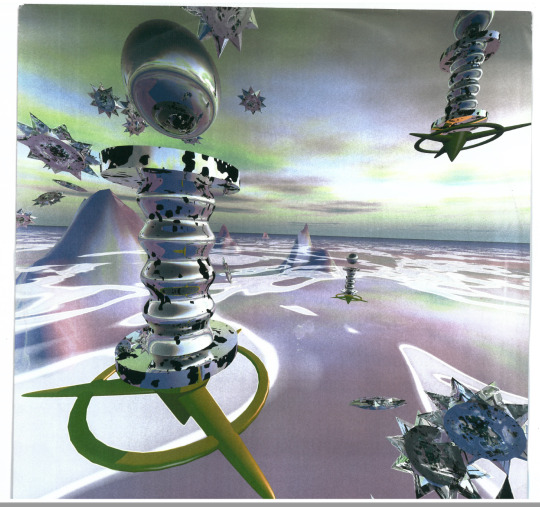
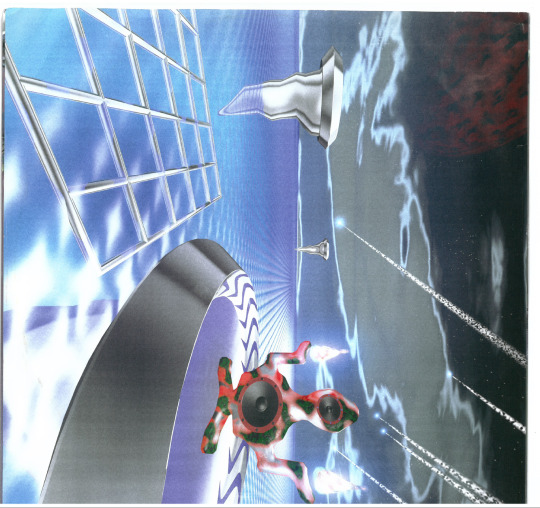
Below are various Slump Sounds visual materials, flyer posters and visual branding eperiements:



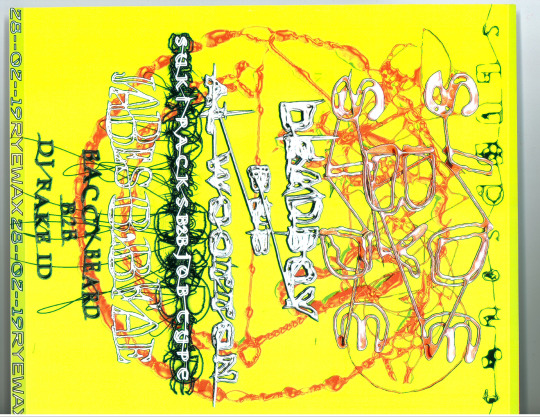
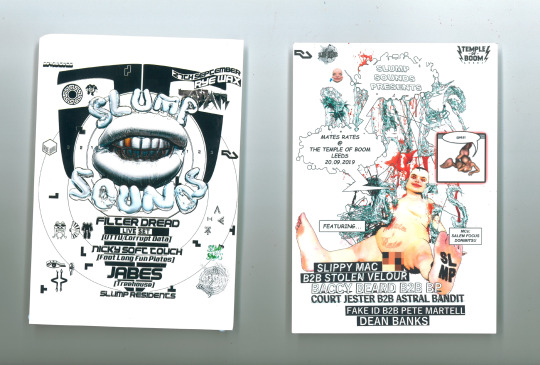
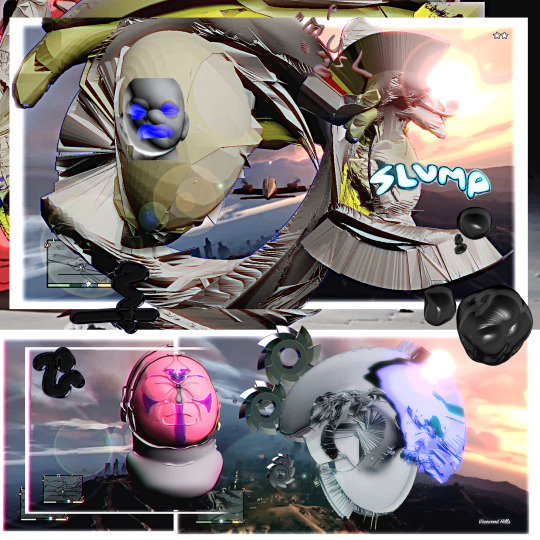

^The above typographical experiments quite literally embody a visual comment market capitalist consumerist branding, by integrating the words ‘YOU MUST CONSUME’ backwards within the name ‘SLUMP SOUNDS’.
To this end, we started plans for a website (shown below), and with Gabriel’s experience in web design assistance, have put together a conceptual mock-up that successfully incorporates the virtual potential of digital software and immersive screen art with DIY cyber-punk imagery. The visual concept is to can be accessed here: https://elated-shirley-a5af24.netlify.com/
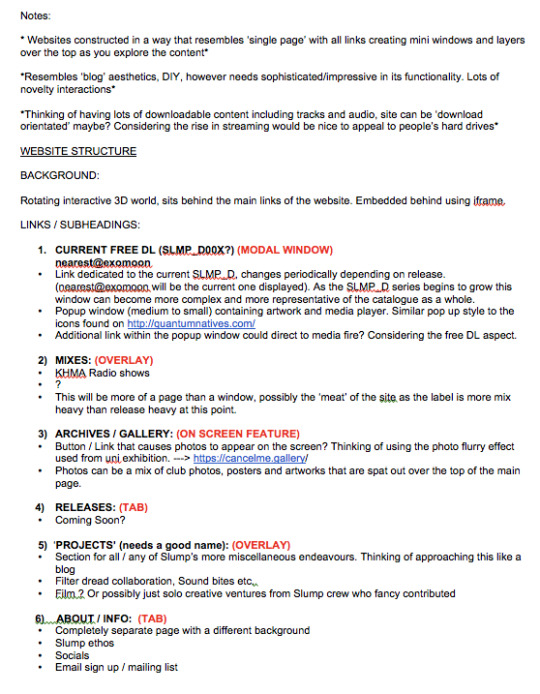
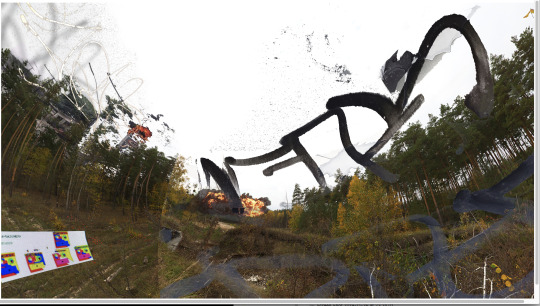

These are collaborative efforts that involve a dialogue with Gabriel and direction from me and Al on the visual concepts behind the website, and though i consider this project a successful ongoing collaboration that will form a major part of my sonic practice, and that of the future of Slump Sounds, I am personally relatively unexperienced with design software and coding. Therefore I wanted to explore an alternative avenue of creativity, with the intention of a decidedly lower-fidelity visual language as a possibility for my final graduation exhibition in April. I have been drawn towards physical and more laborious methodologies of visual and sonic art, such as collage, printing, zine-making and sound production using analog hardware, without the need of a laptop. This sensibility can be seen in the virtualisation of non-virtual things such as graffiti or a marsh.
The search for meaningful and creatively satisfying sound work has led me to the world of analog art and audio programming with physical machines and tactile buttons and nobs. Admittedly, I’ve been very slow to embrace the potential of analog gear for a long time. I believe this has something to do with a sense of not believing myself to be as scientifically inclined as I felt was needed, or feeling the need to learn more about the engineering and mathematics of synthesis or sequencing. In hindsight, this is an unproductive outlook, especially considering the lineage of radical electronic artworks that were born from mistakes or glitches in systems of sound creation and reproduction that characterises a cyberpunk reading of experimental music.
This desire intensified through a process of familiarising myself with pre-digital sound gear; what began as the need to hear cassettes and not owning a cassette deck, which forced me to choose one, locate it, buy it, and figure out how to get it to play what I wanted to hear, which then turned into vinyl and a mixer, and then cheap and simple drum machines. It still remains a part of my practice that I believe requires much more actual play and practice time... Still I contemplate the elusive nature of analog signal processing as when I first played a Casio electric keyboard at a young age. It is important to point out, however, that this does not thus lend me a masterful understanding of digital media processing either, only an ability to abuse to it to my own indulgent ends. Any effort to demystify this practice is a step in a right direction.
Since my introduction to the keyboard, I can say for certain that my interest in electronic sound production and the history over human-machine interaction that defines parts contemporary society and techno-futurism has become a creative obsession. To live and work with meaningful creative disposition within the modernity of media noise and cultural saturation, and having been introduced to the infinite-possibility blank canvases of digital audio work stations at an early age, where my lateral creative mind quickly fostered an addiction to the stress of sonic novelty, erratic compositions that quickly deconstructed or changed an idea or process without allowing time for deep listening or trance-inducing sonic immersion, it has become impertinent for me to seek more visceral, authentic and tactile methodologies. Efforts to correct this habit of laptop art-making are a defining feature of my current personal interests, and my efforts to engage in a more authentically rooted and personal relationship to my sonic practice, extending beyond music and sound production into physical and visual art practices that steer clear from the transience of digital media online allow me to distance myself when I want to from digital work. My peers and I working within Slump Sounds are slowly making progress with collaborative analogue hardware production systems and studio building. Money and time are major factors in this process, though, as Simon Reynolds explains in his lecture on DIY, in some ways the romanticism of investing resources into more meaningful outcomes more appropriately reflects ‘a convergence of energies and passions‘.
On the rare occasion I can return to Leeds during term time for longer than a day, I take the oppurtunity to connect with the label crew to work on the upcoming releases and discuss label business. Al owns a Roland SP808, an Arturia Microbrute and some decent speakers. I brought along my Korg Volca Beats, a reverb pedal and a folder of samples and noises from my own work and sampled from floppy disks and youtube videos. The attached Soundcloud file at the beginning of this post contains the resulting noises we made over about an hour of twiddling and listening. To me the sounds are an evocation of our collective interelations with Grime, Electro and DIY electronics. At the time we discussed as much as we could about the potential of performing with such a setup, and how possible it would be to get a project like that underway, with a focus on the ‘total package’ concept of physical releases, sleeve inserts, flyer promotion etc. that was conceptually a step back from the hyper aesthetics and digital marketting of Slump Sounds. We shared our fascinations with symbolism and aesthetic reflections of experimental arts cultures and avant-garde modes of living, carried through subversive strategies of music branding with the politics of contemporary DIY culture and cyberpunk. In an age characterised by rampant commercialism and media saturation, to what end can alternative practices provide meaning or transcendence from societal norms? Our decision was to begin developing a more DIY post-punk inspired subgroup uber the banner of Slump Sounds, where we could experiment with tactile art-making and more ambitiously conceptual projects not necessarily intended for club systems or commercial profit - enter, LosBundazGanks.
During this session, I talked with Al about my visual investigations into truth, hyperreality and simulation for my Major Research Project, and we decided to begin working on and combining the sounds we were producing with the visuals I have been collecting and researching. Of the 300 hundred or so images that we curated, all of them relate in some form to the idea of simulation and reproduction. The examples below consist of digital cuttings from an online version of the Official Gazette of the United States Patent and Trademark Office: Trademarks, which were selected on the conditions of their visual or conceptual affiliation with the idea of simulation, truth or audio/visual fiction. My intrigue in the catalogue, which gives a written description of each logo, was in the symbiotic relationship between the written definitions and meanings of the symbols, which in turn represented aspects of market capitalism and commodification. These first drafts were then processed through effects on an old version of Microsoft Word. The ‘edges’ function can, with experimentation, produce a digitally rendered appearance of stamping or screenprinting, much like the DIY Zine making methods of hardcore music and art communities:



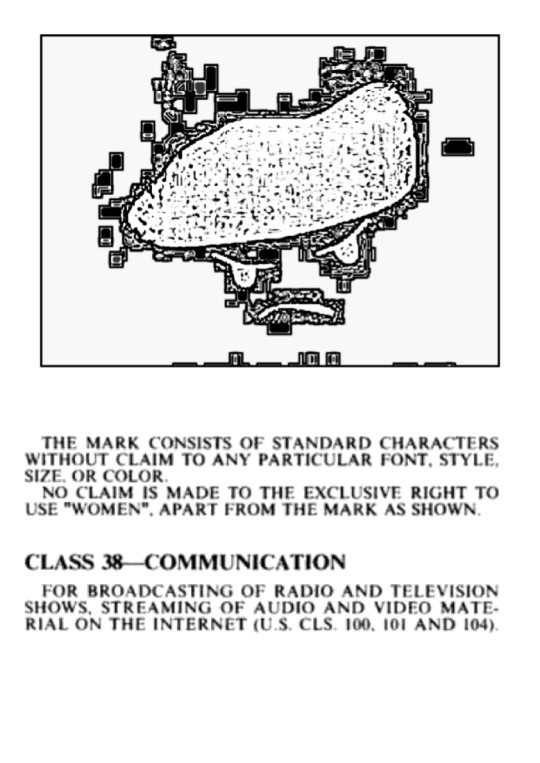


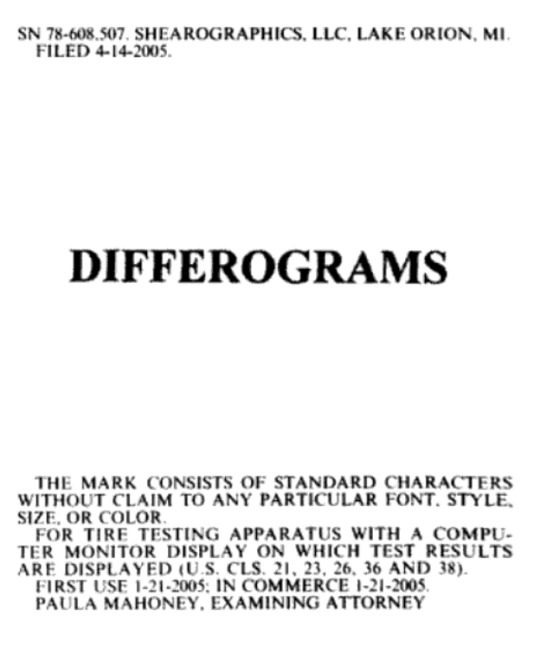

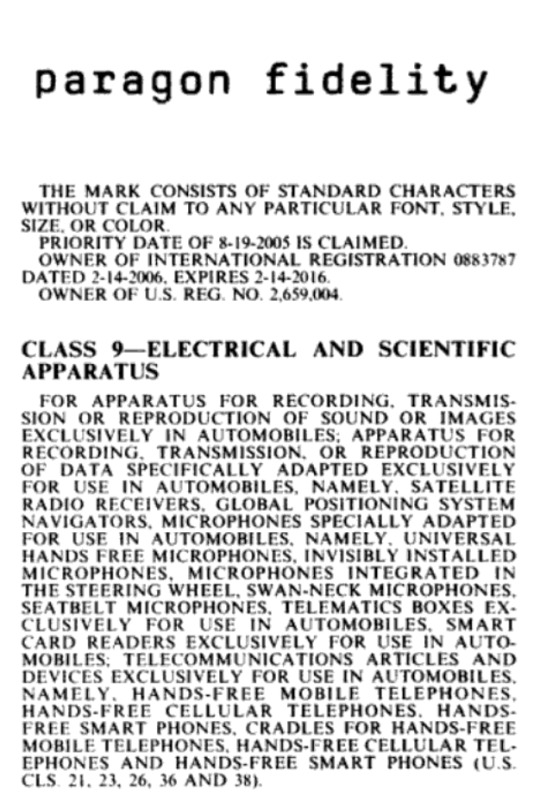


After this, we highlights the inherent entanglements of audsio/visual simulation and truth by juxtaposing these images with other found visual materials. The intention was to build moodboard for reference in the future when we will have the time and resources to develop the idea of a Los Bundaz Ganks physical release or performance.


This process has completely shaped my outlook for future projects, and I have decided to introduce a significant portion of this research into the ideas for the graduate exhibition in April. For an effective audio installation or performance, I consider it important to side-step the context of a gallery situation, which too often in my experience has provided little to no communication in some form other than the actual pieces/sculptures/sounds of the conceptual analogies or research methods that brought the artist to design/build/draw attention to in the first place.
2 notes
·
View notes
Photo










(Some) of the many things science fiction is about
“Science fiction is the most important literature in the history of the world, because it’s the history of ideas, the history of our civilization birthing itself. …Science fiction is central to everything we’ve ever done, and people who make fun of science fiction writers don’t know what they’re talking about.”
~Ray Bradbury
Films & Television Shows featured (from top to bottom): Prometheus, Arrival, The Handmaid’s Tale, Orphan Black, Watchmen, Annihilation, Children of Men, Blade Runner 2049, A.I Artifical Intelligence, The Man In The High Castle
240 notes
·
View notes
Photo

Monte Carlo Tree Search
These images are from the movie 'Avengers: Infinity War'. One of the "good guys" manipulates time to look into the future and see if they successfully defeat the "bad guys."
The joke is that "How?" is probably intended to mean, "How did we defeat the bad guys in that one future?" But it's taken to mean, "How did you find the winning future?" A Monte Carlo tree search, or MCTS, is how a computer scientist or data scientist might do it.
The Monte Carlo method is a way of making predictions that's a big deal in any field that uses a lot of data and statistics -- economics, physics, artifical intelligence, meteorology, etc. It's named after the famous casino in the South of France, where players might think they're winning because of skill or chance, but really the house is always winning.
First let's look at what Monte Carlo isn't. Let's say you're playing Tic Tac Toe against a computer. Whenever you make a move, the computer can calculate every possible sequence of moves that would let the computer win the game. That is, it can simulate every possible way the game could go. The next move it actually makes is the one that leads to a victory in the most simulations. This is an example of a brute-force search, where the computer keeps hammering away until it knows everything that can happen, and you basically can't win.
There are 255,168 different ways a game of Tic Tac Toe can go. That's a big number, but not very big for computers. Now let's say you're playing Chess against a computer. There's a near-infinite number of ways a game of Chess can go -- actually infinite if you don't play with the 50-move rule. Even a supercomputer can't count to infinity, so the brute-force approach won't work.
But the computer knows two things: (1) There are only so many moves that can be made during one turn of chess, and (2) It doesn't have to figure out the best possible sequence of moves, it just has to figure out a sequence that's good enough to beat you.
So, whenever you take a turn, the computer randomly simulates the next couple of moves. It can't simulate more than a couple moves without running out of memory. But it can simulate several thousand different sequences of a couple moves, and tell which of those sequences are "good" (it doesn't lose too many pieces and/or takes a lot of yours). The next move it makes is the one that starts the greatest number of "good" sequences.
This is MCTS. Monte Carlo methods are all about randomly simulating what could happen a bunch of times until you have a pretty good idea of what's most likely to actually happen. It's can't give you 100% certainty the way brute-force can, but when you're trying to predict the weather, or how a stock will perform, or how long a project will take, there's too much going on to get 100% certainty anyway.
This 'Avengers' meme jokes that the good guys can win the war against the bad guys by running a Monte Carlo tree search, as if it was a board game. An MCTS might be pretty accurate if your "war" is a game of Chess or Risk, which has strict rules that you have to follow, but real-life war (let alone a fictional Marvel Comics war) has all sorts of people making all sorts of crazy decisions every all the time.
8 notes
·
View notes
Text
(About) AI: Artifical Intelligence – Part 2 of 5
When you apply Deep Learning – let’s say the problem is “underwriting loans” – you give it examples of people who, with their characteristics (financially and otherwise), whether or not they have returned the money they borrow. Then the system will learn to differentiate those who returned the money from those who didn’t.
If you train it on stocks that go up versus stocks that go down with all sorts of data – including social network, quarterly reports… – it will learn which stocks you should buy that will make you money versus lose you money.
In China, if you use Meitu (to beautify yourself), have you wondered how you have become more beautiful over the years? It is because 5 years ago it didn’t have enough training data. Where does it get training data? Every time you take a selfie and beautify yourself what might you do? You might share it on the social network, you might save it or you might delete it. Then every example of sharing and saving is viewed as a positive exemplar – we want to make more people look like those photos that got saved and we want to make people less like those photos that got deleted. Most people don’t know it, but they are contributing training data all the time to Meitu. And the same goes to Amazon, Google… every time you buy a product, Amazon learns more about people like you what you might buy; every time you talk to your Echo it also learns from you, about you and about people like you.
Those are examples of accumulation of data help Deep Learning gain experience from training.
This experience from training is not infinite; it is limited in 5 ways, i.e. there are 5 conditions for Deep Learning to work:
You need huge quantities of training data
You have to label that data with the desired outcome
You have to apply it to a single domain – this is actually very limiting: for example, your Amazon Echo cannot just be turned into your Meitu beautifier. It is not one size fits all and there is no common sense, there is no cross-domain, there is no true understanding unless it is one domain at a time.
You need a lot of computer resources
You need some AI experts to tune the system
Some people separate weak AI from strong AI: weak AI is a I described before – single domain optimized on data, better than people – while strong AI is more as Artificial General Intelligence (AGI) in the sense of what we see in science fiction where the computer does everything we do and can go cross-domain for common sense understanding, analytical, planning and some people even think self-awareness and emotion – when it exhibits all that it is a pretty scary future, but, in fact, today it is more like a fantasy: it is not that it can never be achieved; it is just a number of engineering breakthroughs needed to achieve it appears to be decades if not centuries away.
I will be focusing on weak AI or Deep Learning like algorithms which are already very powerful.
0 notes
Link
Chapters: 2/?
Fandom: DCU (Comics)
Rating: Mature
Warnings: Major Character Death
Relationships: Hal Jordan/Bruce Wayne
Characters: Hal Jordan, Bruce Wayne, Alfred Pennyworth
Additional Tags: Alternate Universe, Artifical Intelligance, Alternate Universe - Robots & Androids, Alternate Universe - Science Fiction, Heavy Angst, Grief/Mourning, Other Additional Tags to Be Added, listen, things might get a little freaky later on, I'm not making a promise, and it might be a little weird, slightly OOC
Alfred mulled around the kitchen. Each movement dragged the weight of the loss of his surrogate son. Some days it was unbearable, some days he cried to Martha and Thomas Wayne about how he tried and it wasn’t enough. And most days, he was just older, tired, and moving around without the youthful stride he once had at his age.
The day was breaking, the sun coming up behind the hills and casting into the kitchen window. A golden sun to the hostile world, to the cold and lonely city. Gotham had never been the same since Bruce died. Wayne Enterprises lost it’s heart, the right ideas to stand behind. The city suffered from the men who only cared about money in their own pockets. Alfred settled his wrinkled hands on the edge of the metal sink in a loose fist. This morning had eased into one of the others, tears fell down his face and his hands tightened like a child in the midst of a tantrum. Once the wave of grief washed over him, there was no stopping it. He never tried anyways. Bruce wouldn’t see this morning. He couldn’t toss a pillow at Alfred as he tore the curtains down, letting in the bright sunlight. It became a time he missed.
3 notes
·
View notes
Note
any opinions on kubikuro the dog?
Many!Would have loved to see kubikuro around for longer rather than just a single chapter or episode, but unfortunately that’s how most the side stories are written. Perhaps during that brief down period between the Mythos arc and Yomi arc would have been suitable. That way the Phantom Dog story wouldn’t feel so left field. Then again this is Cyborg 009 who needs coherency!While it would have been interesting to see Kubikuro participate in the odd fight here and there I don’t think it should happen. Honestly, Kubi should represent some normality for the cyborgs. (As normal as a smart dog with pyrokinetic powers can be). Just doing mundane things like going for walks together or playing fetch helps humanise the cyborg characters. Give me sweet filler eps!As for what kubikuro actually is though. Is he a cyborg? Is he a mutant? Is he the result of surgery? It’s not clear and there is conflicting information. Surgery on his parents, I believe, was augmentation of artifical parts into the brain to increase intelligence. So yes… technically cyborg but only just. It’s possible the pyrokinetic abilities was an accidental side effect. Given the chance it could have developed in his parents too. As for Kubi though it’s a little more complex. In the manga he had a surgery scar too but in the 01 anime he does not. A mutation brought about by implants in his parents could have been possible I guess (this is fiction afterall). I’m more inclined to believe surgery was the cause tho.Final opinion: LET THEM BE HAPPY FOR ONCEMight add more to this later but it’s like 2am.
5 notes
·
View notes
Text
This weirdly smart, creeping slime is redefining our understanding of intelligence
https://sciencespies.com/nature/this-weirdly-smart-creeping-slime-is-redefining-our-understanding-of-intelligence/
This weirdly smart, creeping slime is redefining our understanding of intelligence

Imagine you’re walking into a forest, and you roll over a fallen log with your foot. Fanning out on the underside, there is something moist and yellow – a bit like something you may have sneezed out, if that something was banana-yellow and spread itself out into elegant fractal branches.
What you’re looking at is the plasmodium form of Physarum polycephalum, the many-headed slime mold. Like other slime molds found in nature, it fills an important ecological role, aiding in the decay of organic matter to recycle it into the food web.
This bizarre little organism doesn’t have a brain, or a nervous system – its blobby, bright-yellow body is just one cell. This slime mold species has thrived, more or less unchanged, for a billion years in its damp, decaying habitats.
And, in the last decade, it’s been changing how we think about cognition and problem-solving.
“I think it’s the same kind of revolution that occurred when people realized that plants could communicate with each other,” says biologist Audrey Dussutour of the French National Center for Scientific Research.
“Even these tiny little microbes can learn. It gives you a bit of humility.”

P. polycephalum in its natural habitat. (Kay Dee/iNaturalist, CC BY-NC)
P. polycephalum – adorably nicknamed “The Blob” by Dussutour – isn’t exactly rare. It can be found in dark, humid, cool environments like the leaf litter on a forest floor. It’s also really peculiar; although we call it a ‘mold’, it is not actually fungus. Nor is it animal or plant, but a member of the protist kingdom – a sort of catch-all group for anything that can’t be neatly categorized in the other three kingdoms.
It starts its life as many individual cells, each with a single nucleus. Then, they merge to form the plasmodium, the vegetative life stage in which the organism feeds and grows.
In this form, fanning out in veins to search for food and explore its environment, it’s still a single cell, but containing millions or even billions of nuclei swimming in the cytoplasmic fluid confined within the bright-yellow membrane.
Cognition without a brain
Like all organisms, P. polycephalum needs to be able to make decisions about its environment. It needs to seek food and avoid danger. It needs to find the ideal conditions for its reproductive cycle. And this is where our little yellow friend gets really interesting. P. polycephalum doesn’t have a central nervous system. It doesn’t even have specialized tissues.
Yet it can solve complex puzzles, like labyrinth mazes, and remember novel substances. The kind of tasks we used to think only animals could perform.
“We’re talking about cognition without a brain, obviously, but also without any neurons at all. So the underlying mechanisms, the whole architectural framework of how it deals with information is totally different to the way your brain works,” biologist Chris Reid of Macquarie University in Australia tells ScienceAlert.
“By providing it with the same problem-solving challenges that we’ve traditionally given to animals with brains, we can start to see how this fundamentally different system might arrive at the same outcome. It’s where it becomes clear that for a lot of these things – that we’ve always thought required a brain or some kind of higher information processing system – that’s not always necessary.”

(David Villa/ScienceImage/CBI/CNRS)
P. polycephalum is well known to science. Decades ago, it was, as physicist Hans-Günther Döbereiner of the University of Bremen in Germany explains, the “workhorse of cell biology”. It was easy to clone, and keep, and study.
However, as our genetic analysis toolkits evolved, organisms such as mice or cell lines such as HeLa took over, and P. polycephalum fell by the wayside.
In 2000, biologist Toshiyuki Nakagaki of RIKEN in Japan brought the little beastie out of retirement – and not for cell biology. His paper, published in Nature, bore the title “Maze-solving by an amoeboid organism” – and that’s exactly what P. polycephalum had done. Nakagaki and his team had put a piece of plasmodium at one end of a maze, a food reward (oats, because P. polycephalum loves oat bacteria) at the other, and watched what happened.
The results were stunning. This weird little acellular organism managed to find the fastest route through every maze thrown at it.
“That triggered a wave of research into what other kinds of more difficult scenarios we can test the slime mold with,” Reid says.
“Virtually all of those have been surprising in some way or another, and surprised the researchers in how the slime mold actually performed. It revealed some limitations as well. But mostly, it’s been a voyage of revelation on how this simple creature can do tasks that have always been given to and thought to be the domain of higher organisms.”
Full of surprises
Nakagaki recreated the Tokyo subway, with the station nodes marked out with oats; P. polycephalum recreated it almost exactly – except the slime mold version was more robust to damage, wherein if a link got severed, the rest of the network could carry on.
Yet another team of researchers found that the protist could efficiently solve the traveling salesman problem, an exponentially complex mathematical task that programmers routinely use to test algorithms.
youtube
Earlier this year, a team of researchers found that P. polycephalum can “remember” where it has previously found food based on the structure of the veins in that area. This followed previous research from Dussutour and her colleagues, who discovered that blobs of slime mold could learn and remember substances that they didn’t like, and communicate that information to other blobs of slime mold once they fused.
“I’m still amazed by how, in a way, complex they are because they always surprise you in an experiment, they would never do exactly what you choose to do,” Dussutour says.
In one instance, her team was testing a growth medium used for mammal cells, and wanted to see if the slime would like it.
“It hated it. It started to build this weird three-dimensional structure so it could go on the lead and escape. And I’m like, ‘oh my gosh, this organism’.”
A processing network
Although it’s technically a single-celled organism, P. polycephalum is considered a network, exhibiting collective behavior. Each part of the slime mold is operating independently and sharing information with its neighboring sections, with no centralized processing.
“I guess the analogy would be neurons in a brain,” Reid says. “You have this one brain that’s composed of lots of neurons – it’s the same for the slime mold.”
>
Physarym polycephalum, “The blob”
Network emergence
Oscillation waves#blob pic.twitter.com/kJUhH0w05a
— Audrey Dussutour (@Docteur_Drey) April 3, 2021
That brain analogy is a really intriguing one, and it wouldn’t be the first time P. polycephalum has been compared to a network of neurons. The topology and structure of brain networks and slime mold blobs are very similar, and both systems exhibit oscillations.
It’s not entirely clear how information is propagated and shared in the slime mold, but we do know that P. polycephalum‘s veins contract to act as a peristaltic pump, pushing cytoplasmic fluid from section to section. And oscillations in this fluid seem to coincide with encounters with external stimuli.
“It’s thought that these oscillations convey information, process information, by the way they interact and actually produce the behavior at the same time,” Döbereiner tells ScienceAlert.
“If you have a network of Physarum go to a certain food, it changes oscillation pattern when it encounters sugar: it starts to oscillate quicker. Because of these quicker oscillations, the whole organism starts changing its oscillation pattern and starts to flow into the direction where the food was found.”
He and colleagues recently published a paper demonstrating that these oscillations are extraordinarily similar to the oscillations seen in a brain, only a hydrodynamic system rather than electrical signals.
“What’s relevant is not so much what oscillates and how the information is transported,” he explains, “but that it oscillates and that a topology is relevant – is one neuron connected to 100 neurons or just to two; is a neuron connected just to its neighbors or is it connected to another neuron very far away.”

P. polycephalum growing on a life-sized model of a human skull. (Andrew Adamatzky, Artifical Life, 2015)
Defining cognition
As exciting as its escapades may seem, any researcher working with it will tell you that P. polycephalum is not, in itself, a brain. It’s not capable of higher-level processing or abstract reasoning, as far as we can tell.
Nor is it, as intriguing as the notion may seem, likely to evolve into something like a brain. The organism has had a billion years to do so and shows no sign of going in that direction (although if any science fiction writers out there like the idea, feel free to run with it).
In terms of overall biology, slime mold is extremely simple. And by that very fact, it’s changing how we understand problem-solving.
Just like other organisms, it needs food, it needs to navigate its environment, and it needs a safe place to grow and reproduce. These problems can be complex, and yet P. polycephalum can solve them with its extremely limited cognitive architecture. It does so in its own simple way and with its own limitations, says Reid, “but that in itself is one of the beautiful things about the system”.
In a sense, it leaves us with an organism – a wet, slimy, damp-loving blob – whose cognition is fundamentally different from our own. And, just like the Tokyo subway, that can teach us new ways to solve our own problems.
“It’s teaching us about the nature of intelligence, really, challenging certain views, and basically widening the concept,” Reid says.
“It does force us to challenge these long-held anthropocentric beliefs that we are unique and capable of so much more than other creatures.”
#Nature
1 note
·
View note